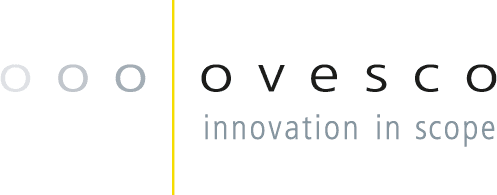OTSC application is recommended for esophageal iatrogenic perforation > 10 mm, for gastric iatrogenic perforations > 10 mm, for early recognized (< 12 h) non-periampullary duodenal iatrogenic perforations, for immediately diagnosed jejunal and ileal iatrogenic perforations and for colorectal iatrogenic perforations > 10 mm
The revised position paper from the European Society of Gastrointestinal Endoscopy (ESGE) on inadvertent iatrogenic perforations occurring during gastrointestinal endoscopy was published in August 2020 by G. A. Paspatis et al., Venizelion General Hospital, Heraklion, Crete-Greece. It updates the 2014 ESGE recommendations on iatrogenic perforations.
The development process included meetings and online discussions of the project committee, which was divided into subgroups each in charge of a series of key questions. Searches were performed on Medline and the Cochrane Central Register of Controlled Trials. Each subgroup developed draft proposals that were presented to the entire group for general discussion. A draft prepared by the project committee chair was sent to all group members for review and besides reviewed by two external reviewers and then sent to the ESGE national societies and individual members. After agreement on a final version, the manuscript was submitted for publication.
The ESGE recommendations include the implementation of a written policy regarding the management of iatrogenic perforation at each endoscopy center, a comprehensive report in case of endoscopically identified perforation, as well as careful evaluation and CT scan in case of specific post-endoscopy symptoms. The therapy recommended for iatrogenic perforation is immediate endoscopic closure if possible. Through-the-scope clips may only be used for small defects (< 10 mm), the OTSC is recommended for larger perforations (> 10 mm but < 20 – 25 mm). The authors state that the wide application of OTSC clips in everyday practice has enhanced the efficacy of endoscopic closure, even in defects larger than 30 mm. Further treatment recommendations include switch to carbon dioxide endoscopic insufflation, diversion of digestive luminal content and decompression of tension pneumoperitoneum or pneumothorax. Further management should be based on the estimated success of the endoscopic closure and on the general condition of the patient. Hospitalization and surgical consultation are recommended in case of not possible or failed endoscopic closure and in patients whose clinical condition is deteriorating.
The position paper gives detailed recommendations for iatrogenic esophageal perforation, gastric perforation, periampullary and biliopancreatic ductal perforation, duodenal and small bowel perforation and colorectal perforation. ESGE recommends first-step endoscopic treatment for esophageal perforation with conventional clips in case of < 10 mm size, OTSC for perforations > 10 mm, stents can be used for larger defects > 20 mm. For gastric perforations, ESGE recommends conventional clips for perforations ≤ 10 mm, and OTSC clips or omental patching or the combined technique using endoloop and conventional clips for perforations > 10 mm. ESGE suggests nonsurgical management in the majority of ERCP-related periampullary or biliopancreatic ductal perforations. In case of severe leakage or sepsis, surgery is required. For duodenal iatrogenic perforation, ESGE recommends endoscopic treatment with OTSC clips or a combination of conventional clips and endoloop or stents if the perforation is recognized within 12 hours after the procedure. In case of failed endoscopic treatment or late diagnosis (> 12 h) of the perforation and clinical deterioration, management should be surgical. Also jejunal and ileal iatrogenic perforation should be treated endoscopically when recognized immediately and surgically in the case of failed endoscopic closure or postprocedural recognition with severe clinical status. For colorectal perforations, ESGE recommends the use of conventional clips for lesions < 10 mm and OTSC clips for defects > 10 mm.
In summary, OTSC clips are recommended in the ESGE position statement on iatrogenic endoscopic perforations for defects > 10 mm with esophageal, gastric, non-periampullary duodenal (when recognized early), jejunal and ileal (when immediately diagnosed) and colorectal location.
Diagnosis and management of iatrogenic endoscopic perforations: European Society of Gastrointestinal Endoscopy (ESGE) Position Statement – Update 2020
Paspatis GA, Arvanitakis M, Dumonceau J, Barthet M, Saunders B, Turino SY, Dhillon A, Fragaki M, Gonzalez J, Repici A, van Wanrooij RLJ, van Hooft JE.
Endoscopy 2020; 52: 792–810. https://doi.org/10.1055/a-1222-3191


 English
English  Français
Français 